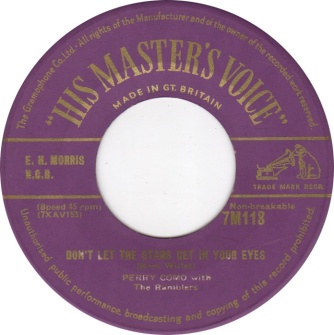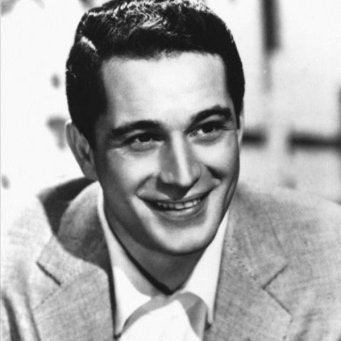This week marks the 1st anniversary of The UK Number 1s Blog (** Trumpet Fanfare**)! In the past year we’ve covered the period from Nov. ’52 to Nov’ 61, with 129 chart-topping songs featured. We’ve survived pre-rock, rode the rock ‘n’ roll revolution, and are now well on our way towards the swinging sixties… Thanks to everyone who has read, followed, commented and enjoyed.
To celebrate this milestone, I’m going to take a short break from the usual countdown to repost seven songs that I have really enjoyed discovering over the past year. These aren’t necessarily the best songs to have topped the charts – there’ll be no Buddy Holly, Johnnie Ray, Connie Francis, Elvis or The Everly Brothers (follow the links if you want to read about them) – as I’ve been listening to, and loving, those artists for years. This week will be all about the forgotten gems, the hits I’d never heard before, the songs that have slipped through the cracks…
Song Number Three is by the artist that I’ve ‘discovered’ the most over the past year. I’d heard the name ‘Guy Mitchell’ before, but didn’t know any of his songs. His career was the 1950s – he was a regular in the Top 10 between 1952-’59, with four #1s along the way. ‘Look at That Girl’ was his 2nd, and I’ve picked it as I think it was the 1st ‘modern’ pop song (verse-chorus etc) to top the charts, and it was also the first to feature a guitar solo! Plus, he had a voice every bit as sexy and smooth as Elvis. Enjoy!

Look at That Girl, by Guy Mitchell (his 2nd of four #1s)
6 weeks, from 11th September to 23rd October 1953
Ladies and Gentlemena, we are finally rocking and rolling. The invasion is here!
Not at first, mind. We begin on familiar territory. We’ve got the jaunty guitars from ‘Don’t Let the Stars…’ and Mitchell’s previous #1, ‘She Wears Red Feathers’ (compared to which this is ten times better!), and some trumpets (or clarinets, or bassoons, whatever…), and Mitchell’s voice still sounds like he thinks he should be singing a comedy number.
Look at that girl, she’s like a dream come true… Ah look at that girl, can blue eyes be so blue…? But this is no simple song of longing. No, Sir. It turns out the girl is already his. We think. With each word my heart just skips, oh if I could kiss those lips… He’s keeping it ambiguous. Maybe they’ve got a thing going. Maybe not.
And as the song goes on – we start to rock. And I don’t mean ROCK (tongue out, fist raised). I mean ‘rock’, like it’s 1953. There are hand-claps. Mm-hmm. And a guitar. Woo! And Mitchell has a little call and response with the backing singers, when they take the lead lyric Look at that girl… and he quips back I don’t believe it they’re making it up! And then there are the lyrics: the kissing, the holding her tight… Pass the smelling salts…

It sounds to me as if a battle is taking place here, between traditional easy-listening and the burgeoning rock ‘n’ roll movement. On the one hand you’ve got the usual twee backing singers and floaty trumpets, parping away at the end of each line; on the other you have the hand claps and the guitar solo. That’s right. Solo. In a symbolic move, the trumpets begin the solo and play it in tandem with the guitar for a couple of bars, before the guitar takes it over completely.
And having said that Mitchell sings the song with a slight giggle in his voice, after the 3rd or 4th listen it works. He’s having a good time. We’re having a good time. He’s a nice singer – he sounds like he could be belting it out if he wanted to, but he doesn’t. The song doesn’t require belting out (That’s something old Eddie Fisher could have learned to look out for…)
If you stick with this blog for long enough, you’ll soon see I’m a sucker for a straight-up, unpretentious pop song. A couple of verses, couple of choruses, a solo and a final verse. Maybe a key change. Then finish. The sort of song that sounds simple but is pretty darn hard to get right. (I say, having never even attempted to write a song in my life). This is one such song. And I like it. It’s my favourite so far.

















